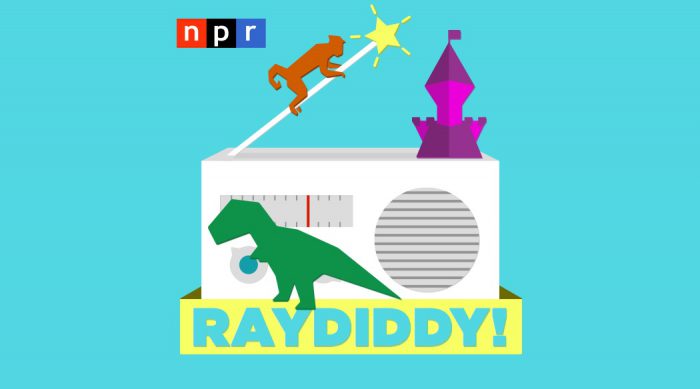
One evening last December, NPR senior visual product designer Libby Bawcombe took notes on the back of an envelope as she conducted a user-research survey.
The next day was the start of NPR’s Serendipity Days — a few days each quarter when NPR digital employees can take a step back from their daily work to focus on something else. Bawcombe and Kaytee Nesmith, a senior product designer, had decided to spend their serendipity time creating a podcast for kids.So that night Bawcombe decided to ask for feedback from one of their potential future listeners: her then-five-year-old daughter.
“As a parent, I am not an expert on children — except maybe on one child on the planet,” said Bawcombe. It’s hard to say whether what appeals to one child will appeal to another. “There’s a lot of room for experimentation.”
While there’s growing interest around children’s audio — there’s even a community group, Kids Listen, with a dedicated Slack — and many public radio stations throughout the United States already offer programming or podcasts aimed at younger audiences, NPR didn’t have anything specifically targeting a younger crowd. “we wanted to find out more about what NPR could offer for kids,” Bawcombe said — specifically for 4- to 8-year-olds.This fall, after subsequent Serendipity Days and going through a two-week program in NPR’s editorial incubator Story Lab, the pair released two sample episodes of the podcast, which they named Raydiddy.
One episode was about bees, and the other was about sick days. The episodes begin with Bawcombe and Nesmith interviewing kids and talking with experts. For the bee episode, they spoke with an elementary school science teacher and a beekeeper.
Bawcombe and Nesmith spent their initial time figuring out the structure of the podcast and producing an initial proof of concept. They had to decide which topics to focus on, how to balance adult and kids’ voices, and how to make sure the episodes were engaging for young listeners.
Next, as they participated in Story Lab, Bawcome and Nesmith were able to take two weeks off from their day jobs to focus exclusively on the podcast. As designers, Nesmith said working during the two-week sprint came naturally to them.
“Since Libby and I come form this digital design background, we’re used to having two weeks to focus on one specific chunk of work with the express goal of a release,” Nesmith said. “Going into Story Lab was an easy transition. It followed very much the workflow and path that we knew.” The two worked with Story Lab’s Michael May to determine what they could accomplish in the two-week sprint. May encouraged them to think critically about the stories they were trying to tell and what their roles would be on the show.They planned a day-by-day schedule and plotted out how they would plan out the stories, conduct interviews, write scripts, and edit the tape.
They found that interviewing kids is more challenging than interviewing adults. “[Even if] the kid is very outspoken in regular life, when you put the headphones on and give them the microphone, they clam up,” Bawcombe said. “There are some ways to draw them out, but there’s not a way you can push a child to talk, the way you can when you’re interviewing another adult and you can push them to give you more.”
Bawcombe and Nesmith also had to learn how to use NPR’s audio recording equipment. As digital designers, the pair had little experience producing podcasts, but they said they relished the opportunity to try their hands at audio while exploring a potential area of growth for NPR.
“The one thing I found to be really challenging was figuring out the levels of volume and voices and evening those out,” Nesmith said. “You don’t want to randomly start shouting at your listener.”
Bawcombe and Nesmith posted the episodes on Medium and asked for feedback. As of now, they have no concrete plans to move forward with the project permanently. They did say, however, that they might use future Serendipity time to work on Raydiddy.
No matter what ultimately happens with the podcast, they both said that working on Raydiddy helped give them a better appreciation for what goes on in other departments at NPR.
“It was nice immersing ourselves in that world,” Bawcombe said.